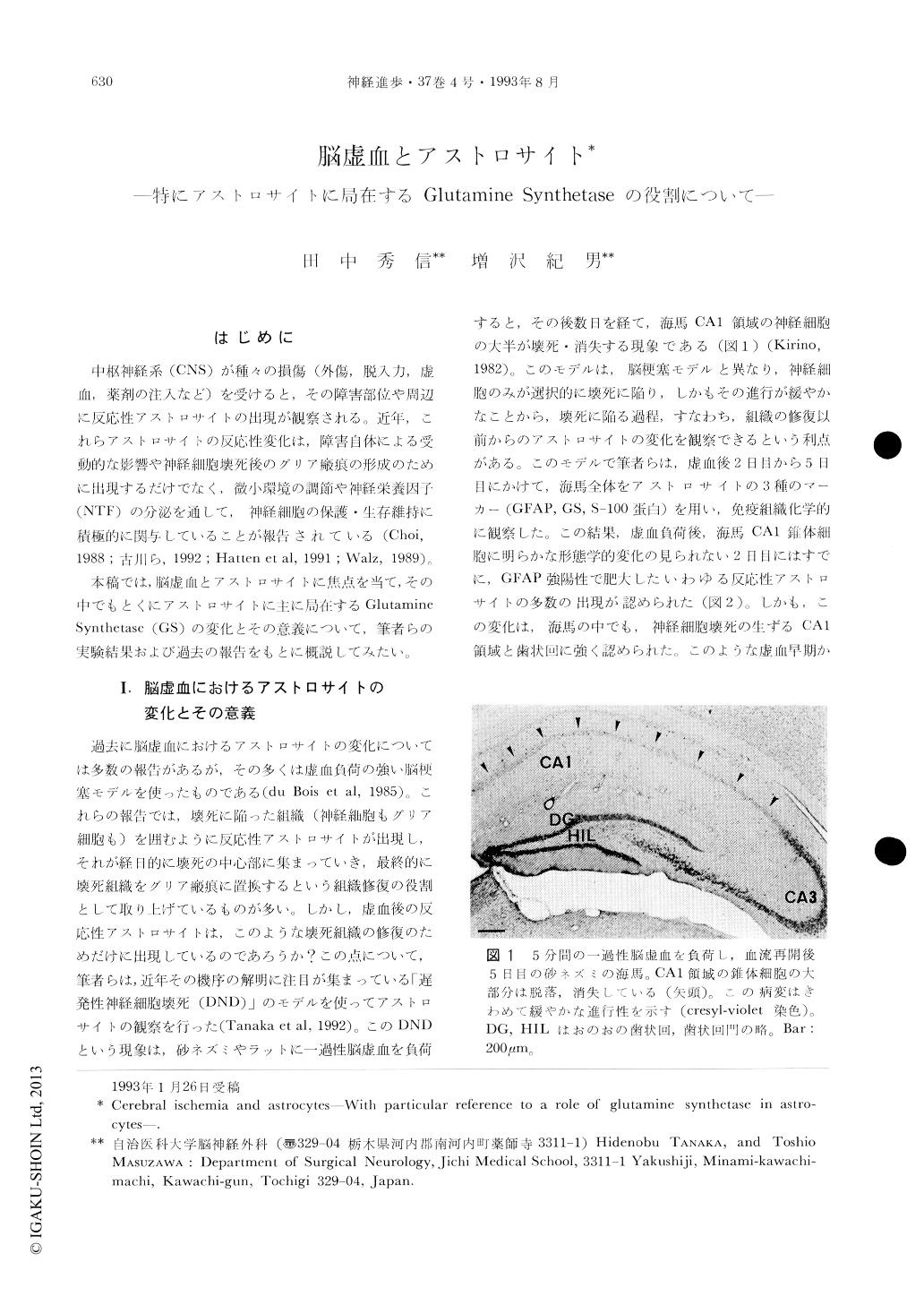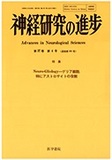Japanese
English
- 有料閲覧
- Abstract 文献概要
- 1ページ目 Look Inside
はじめに
中枢神経系(CNS)が種々の損傷(外傷,脱入力,虚血,薬剤の注入など)を受けると,その障害部位や周辺に反応性アストロサイトの出現が観察される。近年,これらアストロサイトの反応性変化は,障害自体による受動的な影響や神経細胞壊死後のグリア瘢痕の形成のために出現するだけでなく,微小環境の調節や神経栄養因子(NTF)の分泌を通して,神経細胞の保護・生存維持に積極的に関与していることが報告されている(Choi,1988;古川ら,1992;Hatten et al,1991;Walz,1989)。
本稿では,脳虚血とアストロサイトに焦点を当て,その中でもとくにアストロサイトに主に局在するGlutamineSynthetase(GS)の変化とその意義について,筆者らの実験結果および過去の報告をもとに概説してみたい。
Reactive astrocytes are known to appear in the injured area following various types of damage in the central nervous system. Although the role of these astrocytes is not yet fully understood, it has recently been advocated that they play an important role in neuronal survival against injury. This review presents our recent experiments and discusses experiments aimed at elucidating the role of astrocytes, particularly the role of glutamine synthetase (GS) in astrocytes, in ischemic neuronal injury.
In our cxperimental study, we used an immunohistochemical method to study the distribution and changes with time of the astrocytic reaction in the gerbil hippocampus following transient ischemia. Three markers with specific antibodies to glial fibrillary acidic protein, GS, and S-100 protein were investigated. Our study showed that reactive astrocytes had emerged by the time CA1 hippocampal neurons were degenerated and that the distribution of these cells was confined to the vulnerable areas. These observations indicate that astrocytes play a role in the neuronal degeneration process induced by ischemia, rather than only participating in glial scar formation.

Copyright © 1993, Igaku-Shoin Ltd. All rights reserved.


